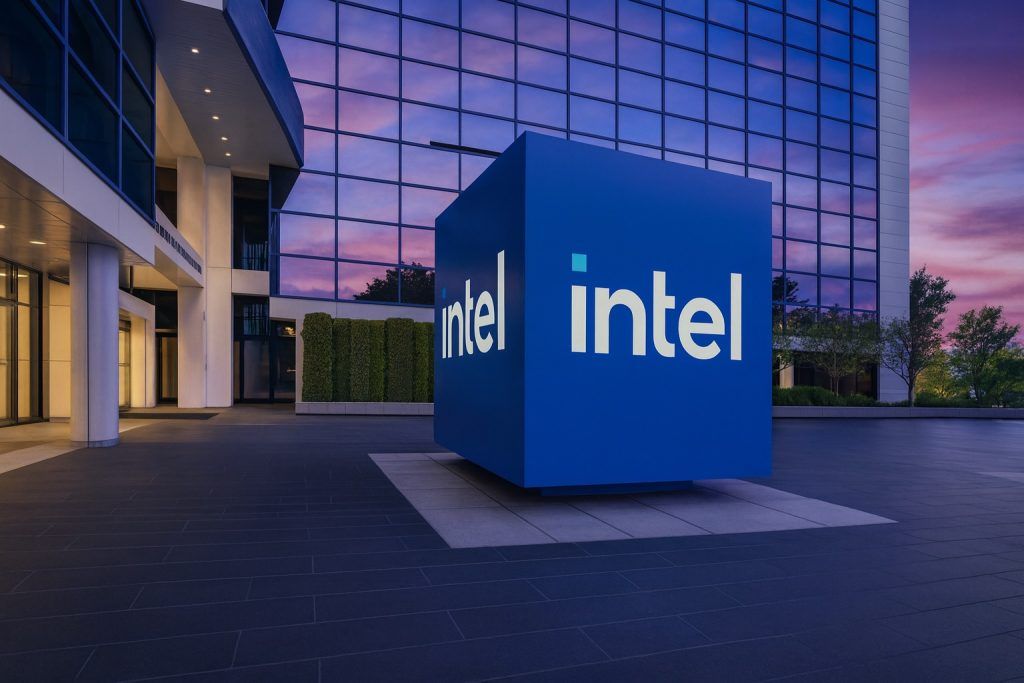Key Takeaways
- AMD stock swung from strong early gains to a sharp loss of around 6% today as the Nvidia-driven AI rally faded. [1]
- The shares are still up roughly 70–80% year to date but are coming off a 5‑day losing streak of about 14%, highlighting how volatile the AI trade has become. [2]
- Fresh news includes a 1GW AI‑infrastructure joint venture in Saudi Arabia with Cisco and Humain, plus renewed debate over AMD’s bold target of $100 billion in annual revenue by 2030. [3]
- Wall Street remains broadly bullish, with many price targets between $260 and $300, even as some analysts warn about lofty valuations and customer concentration risk. [4]
AMD stock price today: volatility after Nvidia earnings
As of the latest trade on November 20, 2025, Advanced Micro Devices (NASDAQ: AMD) is changing hands at about $210 per share, down roughly 5.9% on the day. The stock opened near $232.86, climbed as high as about $237, and then slid to an intraday low around $208.8 on heavy volume of more than 47 million shares.
That drop comes after AMD closed Wednesday around $223.55, and caps a highly volatile stretch in which the stock has lost about 14% over the past five sessions, even though it remains more than 80% higher year‑to‑date and well above its 52‑week low near $76. [5]
In other words: AMD is still one of 2025’s big AI winners, but the ride is getting bumpier.
Morning: Nvidia’s blockbuster quarter lifts AMD and other AI chip names
Before the opening bell, sentiment around AI and chip stocks was very different.
- Nvidia’s fiscal Q3 earnings smashed expectations and its outlook helped ease fears that the AI boom was already turning into a bubble. [6]
- U.S. index futures jumped, and chip stocks including AMD, Broadcom, Arm and Micron all traded sharply higher in pre‑market action, according to early market coverage. [7]
A Finbold report noted that AMD closed Wednesday at $223.55 but rebounded to about $232.80 in pre‑market trading, a gain of roughly 4%, as traders reassessed the recent sell‑off in semiconductors. [8]
CoinCentral later observed that AMD traded around $233.49 during the session, with intraday swings between roughly $219.71 and $235.50, reflecting intense reaction to Nvidia’s numbers and the broader AI narrative. [9]
In short, the day started with “AI is back” optimism: Nvidia’s earnings reassured investors that hyperscaler spending on AI infrastructure remains strong, and AMD was pulled higher as a key alternative supplier of high‑performance CPUs and GPUs.
Midday: AI valuation worries resurface and the rally fades
By midday, the mood changed.
A Reuters market wrap described how U.S. tech stocks failed to hold onto early gains, with Nvidia slipping from a 5% jump to a loss and AMD tumbling around 5.8%, along with other chipmakers. [10]
Behind the reversal:
- Investors refocused on rich valuations across the AI complex. Reuters highlighted that Nvidia’s 12‑month forward P/E is about 28, versus roughly 36 for AMD and over 60 for Intel, underscoring how aggressively the market is already pricing in future growth. [11]
- A Trefis analysis noted that AMD’s recent 5‑day losing streak erased about $57 billion in market value, even after strong Q3 earnings and an upbeat Analyst Day, arguing that the stock looks “strong fundamentally but relatively expensive” versus its history. [12]
By late session, real‑time pricing data showed AMD down nearly $13 from the prior close, hovering around $210, and giving back much of the early Nvidia‑driven bounce. [13]
The message from the tape: markets still believe in AI, but are increasingly sensitive to how much they’re paying for that growth.
New Saudi AI joint venture adds long‑term demand catalyst
Away from the ticker tape, AMD announced a significant new infrastructure partnership that could support its long‑term AI ambitions.
According to DataCenterDynamics, AMD and Cisco have created a joint venture with Saudi AI company Humain to deliver up to 1GW of AI infrastructure in Saudi Arabia by 2030. [14]
Key details from today’s announcement:
- The JV will combine Humain’s large‑scale data centers with AMD’s Instinct MI450‑series GPUs and Cisco’s networking gear. [15]
- The first phase is a 100MW deployment expected to go live around 2026, likely at one of Humain’s hyperscale facilities in Riyadh or Dammam. [16]
- The JV already has its first customer, generative video company Luna AI, which plans to lease capacity from the project. [17]
- AMD will also establish an “AMD Center of Excellence” in Saudi Arabia to support local integration, software optimization and ecosystem development around its AI hardware. [18]
The deal builds on a previously announced $10 billion framework agreement between AMD and Humain to deploy hundreds of megawatts of AI compute in the region, and ties into broader U.S. approvals for high‑end AI chips to Saudi data centers. [19]
For AMD, this JV:
- Locks in incremental long‑term GPU demand,
- Strengthens its position in the fast‑growing “sovereign AI” and Middle East hyperscale market, and
- Showcases Instinct MI450 as a serious competitor in large AI clusters at a time when Nvidia still dominates data‑center accelerators.
Analyst reaction: bullish targets vs. cautious voices
Upgrades and price targets up to $300
The recent Financial Analyst Day and AI roadmap have triggered a wave of bullish Wall Street commentary:
- CoinCentral reports that Wells Fargo, Evercore ISI and Mizuho have all raised ratings or targets since last week, with new price objectives clustered in the $260–$300 range. [20]
- MarketBeat notes that UBS, Rosenblatt, Evercore ISI and TD Cowen have all reiterated or boosted buy‑rated targets, pushing the average 12‑month target to around $270–$275, with some calls as high as $300. [21]
- A broader survey of analysts shows roughly “Buy” / “Moderate Buy” consensus, with dozens of firms still expecting upside from current levels. [22]
Many of these notes point to:
- Accelerating data‑center GPU and CPU share gains,
- A deep AI accelerator roadmap (MI350, MI450, MI500), and
- The potential for AI PCs and edge computing to add further growth drivers.
A neutral stance from Seaport and valuation concerns
Not everyone is comfortable with the risk‑reward at today’s prices.
A brief from GuruFocus, carried on TradingView, highlighted comments from Seaport analyst Jay Goldberg, who:
- Remains neutral on AMD despite the growth story.
- Argues that AMD’s $100 billion 2030 revenue goal still represents only a modest slice of the trillion‑dollar silicon market the company is targeting.
- Estimates that, outside CPUs, AMD’s implied market share in GPUs and AI accelerators is only in the mid‑single digits, and warns about customer concentration, with the company leaning heavily on one large buyer whose future spending path is uncertain. [23]
That more cautious take mirrors the tone from Trefis and parts of the broader market today: AI growth looks real, but expectations – and valuations – are very high. [24]
AMD’s Financial Analyst Day: huge AI ambitions
Today’s trading is also happening in the shadow of AMD’s Financial Analyst Day from November 11, which effectively reset the company’s long‑term narrative.
In its official press release, AMD laid out some striking multi‑year targets: [25]
- Company‑wide revenue CAGR >35% over the next 3–5 years.
- Data‑center revenue CAGR >60%, with AI data‑center revenue growing more than 80% annually.
- A path to non‑GAAP EPS above $20 and operating margins above 35%.
- A goal of more than 50% server CPU revenue market share, leveraging EPYC’s performance and efficiency.
External commentary from Nasdaq and Motley Fool framed these targets around a headline objective of “$100 billion in annual AI‑related revenue by 2030”, which would mark AMD as one of the few chipmakers capable of truly competing with Nvidia in large‑scale AI infrastructure. [26]
On the product side, AMD emphasized:
- Instinct MI350 as its fastest‑ramping data‑center GPU ever, already deployed at scale.
- Upcoming “Helios” systems with MI450 GPUs in 2026 and MI500‑series parts in 2027, aimed at rack‑scale AI performance leadership. [27]
- A broadening AI PC roadmap with next‑generation “Gorgon” and “Medusa” client processors, promising up to 10× AI performance gains versus 2024 designs. [28]
Today’s Saudi JV announcement and the surge of analyst upgrades are, in many ways, the first real‑world tests of that roadmap in investors’ models.
Fund flows and ownership: institutions stay engaged
Today also brought fresh data on how professional investors are positioning around AMD:
- GDS Wealth Management disclosed it raised its AMD stake by 33.5% in Q2, to more than 83,000 shares worth roughly $11.8 million, according to a new 13F filing summarized by MarketBeat. [29]
- A separate MarketBeat instant alert earlier today noted that TD Waterhouse Canada trimmed its AMD holdings by about 34% during the same period, still leaving a position valued around $13 million. [30]
Those moves underscore a familiar pattern in high‑growth tech:
- Some institutions are adding into weakness, betting that AI demand will justify current valuations.
- Others are taking profits or rebalancing after a massive multi‑year run.
Overall institutional ownership remains high, above 70% of shares outstanding. [31]
How today fits into AMD’s bigger AI story
Putting it all together, November 20, 2025 tells a story of tug‑of‑war around AMD stock:
- Fundamentals and pipeline look strong.
- Robust Q3 results, with revenue growing mid‑30s percent year over year and EPS ahead of expectations. [32]
- A clearly articulated multi‑year AI and data‑center strategy with ambitious financial targets. [33]
- Concrete demand drivers such as the Saudi JV and deepening partnerships with hyperscalers and enterprise customers. [34]
- Sentiment is oscillating with Nvidia and the broader AI trade.
- Valuation remains the fault line.
- Forward valuation metrics show AMD priced for very high growth, with a richer multiple than Nvidia even after today’s drop. [37]
- Some analysts see this as justified by the company’s AI roadmap and market share goals; others argue that even small disappointments in AI demand or execution could hit the stock hard. [38]
What investors may want to watch next (not financial advice)
For readers tracking AMD stock beyond today’s close, a few upcoming themes stand out:
- Execution on AI accelerators
How quickly AMD can ramp MI350/MI450 deployments, especially with large cloud providers and AI startups, will help validate those aggressive revenue targets. [39] - Further sovereign‑AI and regional cloud deals
The Saudi JV could be a template for similar projects in Europe, Asia and other parts of the Middle East as countries seek domestic AI infrastructure. [40] - The balance between growth and valuation
With 5‑day losses near 14% but YTD gains still enormous, the stock is at a point where even neutral headlines can trigger outsized moves as investors continuously recalibrate what “fair value” looks like in an AI‑driven world. [41]
Disclaimer: This article is for informational and news purposes only and does not constitute investment advice, a recommendation, or a solicitation to buy or sell any security. Always do your own research or consult a licensed financial adviser before making investment decisions.
References
1. www.reuters.com, 2. www.trefis.com, 3. www.datacenterdynamics.com, 4. www.marketbeat.com, 5. www.trefis.com, 6. www.investopedia.com, 7. www.investopedia.com, 8. finbold.com, 9. coincentral.com, 10. www.reuters.com, 11. www.reuters.com, 12. www.trefis.com, 13. finbold.com, 14. www.datacenterdynamics.com, 15. www.datacenterdynamics.com, 16. www.datacenterdynamics.com, 17. www.datacenterdynamics.com, 18. www.datacenterdynamics.com, 19. www.datacenterdynamics.com, 20. coincentral.com, 21. www.marketbeat.com, 22. stockanalysis.com, 23. www.tradingview.com, 24. www.trefis.com, 25. www.amd.com, 26. www.nasdaq.com, 27. www.amd.com, 28. www.amd.com, 29. www.marketbeat.com, 30. www.marketbeat.com, 31. www.marketbeat.com, 32. www.marketbeat.com, 33. www.amd.com, 34. www.datacenterdynamics.com, 35. www.investopedia.com, 36. www.reuters.com, 37. www.reuters.com, 38. coincentral.com, 39. www.amd.com, 40. www.datacenterdynamics.com, 41. www.trefis.com







